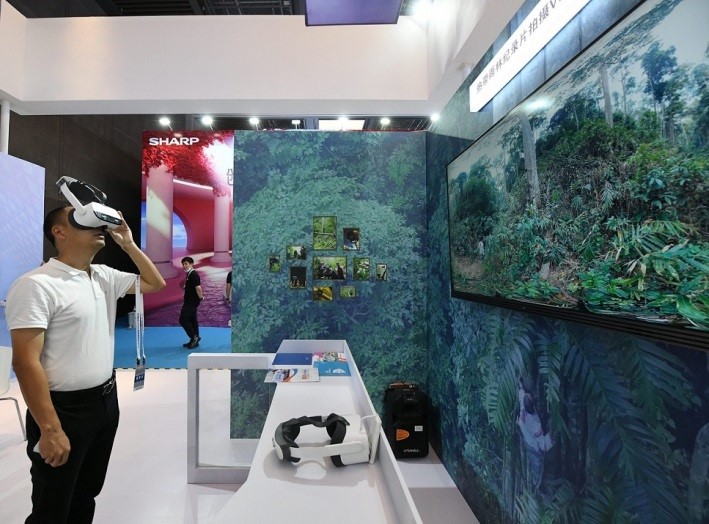Short videos give a boost to popular science

An exhibition showcasing the Chinese civilization via digital technologies is held at the Capital Museum in Beijing, September 2020. (Photo by He Luqi/People's Daily Online)
Ning Yuan is an influencer that owns 9.67 million followers on Douyin, the Chinese version of TikTok. His videos, mostly about popular science, such as why volcanoes are rekindled, the physiological structure of crawfish and why mosquitoes bite, teach audiences in a fun and easy-to-understand way.
Ning likes employing handmade models in his videos to present scientific laws and often uses close-ups to help audiences better understand.
"Popular science videos are meaningless if they are made opaque. The good ones are those that are both understandable for children and attractive for adults," said Ning.
He told People's Daily that the biggest challenge in making popular science videos is not about science, but about how to make the videos popular. In other words, video bloggers must try their best to explain highbrow scientific knowledge to audiences in the simplest language.
Today, digital technologies are making popular science extremely accessible online, and the internet, which enables people to learn anytime and anywhere, has become an important way for young generations to enrich their minds.

A livestream activity about earthquake response and disaster relief is held in a civil defense museum in Huai'an, east China's Jiangsu province, May 2022. (Photo by Zhao Qirui/People's Daily Online)
According to the 50th China Statistical Report on Internet Development recently released by the China Internet Network Information Center, the number of short video users in China reached 962 million as of June this year, accounting for 91.5 percent of the country's total internet users.
"As user demands evolve, videos play an increasing role. In the past, we wanted funny short videos, but today we want them to be useful and even enlightening," said Zhang Zhi'an, professor at the School of Journalism, Fudan University.
Many short video platforms have made concrete efforts to enrich their content in popular science, and scholars and experts from a wide range of fields, from energy to manned space, are sharing the latest progress of frontier technologies on these platforms.
For instance, Douyin, in collaboration with the China Association for Science and Technology, recently launched the second season of a popular science short video program joined by Chinese academicians. Relevant videos have been played 130 million times in total.

A man wears a virtual reality headset to watch a rain forest at the 2021 World UHD Video Industrial Conference. (Photo by Xu Jianmei/People's Daily Online)
Chinese geologist Liu Jiaqi noted that short videos are an excellent medium of science popularization as they are interesting and easy to watch.
"A lecture given in a short video can obtain 5 to 6 million views, which is impossible for a traditional one given in a classroom," Liu said.
Short video platform Kuaishou also launched a knowledge-themed livestreaming activity covering a wide range of areas, including economy and psychology. An employee of Kuaishou introduced that cooking lessons were the most sought after in prime time of summer, while musical instrument teaching gained more views between 21:00 and 23:00.
“Short videos and livestreaming are making a new trend of science popularization,” said Bai Xiaoqing, an associate professor at the Television School, Communication University of China. They can present scientific knowledge in simple language, as well as in pictures and animation, which makes the content more artistic and attractive, she said, adding that such videos can be reached by a wider range of audiences.
Photos
Related Stories
- China to tighten regulation of livestreaming, short videos
- Short videos bring Chinese culture closer to the world
- “When Koala Meets Panda” 2021 China-Australia Short Video Contest kicks off
- China's short video users number 873 million
- China's mobile internet users spend a quarter of surfing time on short video: report
Copyright © 2022 People's Daily Online. All Rights Reserved.









